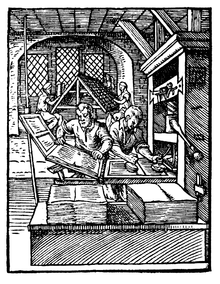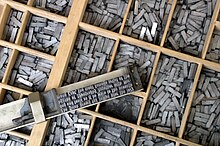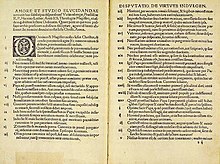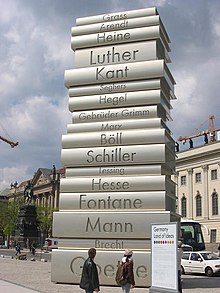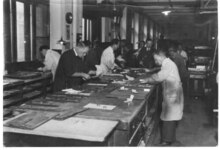What is literature?
Literature is traditionally described as the body of writing that exists because of its inherent imaginative and artistic qualities. In Rosenblatt's term, writing that we live through as we read it and writing that is primarily scientific, intellectual, or philosophical often wavers; we read these different kinds of texts for different purposes, expecting to come away with different kinds of knowledge.
Louise Rosenblatt
https://en.wikipedia.org/wiki/Louise_Rosenblatt
Louise Michelle Rosenblatt (23 August 1904 in Atlantic City, New Jersey – 8 February 2005 in Arlington, Virginia) was an American university professor. She is best known as a researcher into the teaching of literature.
Research and contributions[edit]
When Rosenblatt began teaching English Literature at Barnard, she developed an intense interest in each reader's unique response to a given text. Her views regarding literacy were influenced by John Dewey,[2] who was in the philosophy department at Columbia in the 1930s, as well as Charles Sanders Peirce and William James.
She is best known for her influential texts Literature as Exploration (1938) and The Reader, The Text, The Poem: The Transactional Theory of the Literary Work(1978), in which she argues that the act of reading literature involves a transaction between the reader and the text. She argued that the meaning of any text lay not in the work itself but in the reader's interaction with it, whether it was a play by Shakespeare or a novel by Toni Morrison. Her work made her a well-known reader-response theorist. In her view, each "transaction" is a unique experience in which the reader and text continuously act and are acted upon by each other. A written work (often referred to as a "poem" in her writing) does not have the same meaning for everyone, as each reader brings individual background knowledge, beliefs, and context into the reading act. Rosenblatt's idea of the reading process, however, does not lead to all readings being equally accurate. For the reader's part, he or she must pay close attention to every detail of the text and pay equal attention to his or her own responses. This process exemplifies not only reader-response criticism but also close reading.
Additionally, Rosenblatt distinguished between two kinds of reading, or "stances," which she viewed on a continuum between "efferent" and "aesthetic." Efferent reading is the most common kind, in which the reader seeks to derive information from the text. The reader is concerned mainly or totally with the gist, the message, the information, he or she can "carry away," which is what "efferent" means, conducting away. Such a reader does not care about how the text is worded. In contrast, if a reader approaches a text seeking to enjoy its formal characteristics--its rhythms, its word choices, its images, its connotations--then that person is reading "aesthetically." Such a reader hopes to participate in an aesthetic experience, much like listening to a great musical composition or viewing a beautiful painting. That is what "aesthetic" means, perceiving something beautiful.
Why do adults pick up and read a novel or a collection of poetry?
First, from Literature of any kind, we seek pleasure - not to find a lesson in ecology, not to be taught about the natural habitat of the Louisiana brown pelican or about the perils of global warming. We choose literature that promises entertainment and, sometimes, escape. If other discoveries come to us, too, we are pleased and doubly rewarded.
Literature provides a second reward: understanding. This understanding comes from the exploration of the human condition and the revelation of human nature. It is the province of literature to observe and comments, to open individuals and their society for our observation and understanding. Until we are aware of temperament, anxieties, joys, and ambitions, we do not know that person.
Third, Literature shows human motives for what they are, inviting the reader to identify with or react to a character. Throughthewriter'scarefulchoiceofdetailswecometosee clearly the motivation for action. Seeing motives we disapprove of, we distrust, or seeing a reflection of our own mistakes, we forgive.
Forth, Literature provides vicarious experiences. Yet literature makes it possible for us to experience different times, places, and lives. The vicarious experience of literature entices and leads us into meeting an artist-creator whose medium, words or brush strokes, we know; whose subject, human nature, we live with; whose vision, life's meaning, we hope to understand. The writer's skill with words, like the artist's ability with shape, color, and line, gives us a pleasure we want to share - and an understand we have an urge to spread.
Literature for children and Young Adults
Children's literature provides visual worlds to enter into. Texture, color, shape, and line, along with shading, contrast, perspective, and balance- these are some of the elements that accomplished children's artists of our time work and play with as they create wonderful new and familiar words for us in photographs or watercolors, pen or ink, acrylic or gouache, collage or cartoon. Charlotte'sWeb is a beautiful story, and the drawings of the great Garth Williams enhance they way we understand Wilbur.
Charlotte's Web
Plot summary
After her father spares the life of a piglet from slaughtering it as runt of the litter, a little girl named Fern Arable nurtures the piglet lovingly, naming him Wilbur. On greater maturity, Wilbur is sold to Fern's uncle, Homer Zuckerman, in whose barnyard he is left yearning for companionship but is snubbed by other barn animals, until befriended by a barn spider named Charlotte, living on a web overlooking Wilbur's enclosure. Upon Wilbur's discovery that he is intended for slaughter, she promises to hatch a plan guaranteed to spare his life. Accordingly, she secretly weaves praise of him into her web, attracting publicity among Zuckerman's neighbors who attribute the praise to divine intervention. As time passes, more inscriptions appear on Charlotte's webs, increasing his renown. Therefore, Wilbur is entered in the county fair, accompanied by Charlotte and the rat Templeton, whom she employs in gathering inspiration for her messages. There, Charlotte spins an egg sac containing her unborn offspring, and Wilbur, despite winning no prizes, is later celebrated by the fair's staff and visitors (thus made too prestigious alive to justify killing him). Exhausted apparently by laying eggs, Charlotte remains at the fair and dies shortly after Wilbur's departure. Having returned to Zuckerman's farm, Wilbur guards Charlotte's egg sac and is saddened further when the new spiders depart shortly after hatching. The three smallest remain, however. Pleased at finding new friends, Wilbur names the spiderlings Joy, Nellie, and Aranea, and the book concludes by mentioning that more generations of spiders kept him company in subsequent years.
Characters
- Charlotte A. Cavatica, or simply Charlotte, is a spider who befriends Wilbur. In some passages, she is the heroine of the story.[2]
- John Arable: Wilbur's first owner.
- Fern Arable, John's daughter, who adopts Wilbur in his infancy, and later visits him. She is the only human in the story capable of understanding nonhuman conversation.
- Templeton is a rat who helps Charlotte and Wilbur only when offered food. He serves as a somewhat caustic, self-serving comic relief to the plot.
- Avery Arable is the elder brother of Fern. Like Templeton, he is a source of comic relief.
- Homer Zuckerman is Fern’s uncle who keeps Wilbur in his barn. He has a wife, Edith, and an assistant named Lurvy.
- Other animals in Zuckerman’s barn, with whom Wilbur converses, are a disdainful lamb, a talkative goose, and an intelligent "old sheep".
- Henry Fussy is a boy of Fern’s age, of whom Fern becomes fond of.
- Dr. Dorian is the family physician/psychologist consulted by Fern's mother and something of a wise old man character.
- Uncle is a large pig whom Charlotte disdains for coarse manners and Wilbur’s rival at the fair.
We plan to group classic books of both kinds - books that have worn well, attracting reader from on generation to the next, as well as books that have broken new ground, influencing other writers and artists of children's literature - in textsets of related children's book.
Summary
Literature provides both pleasure and understanding.
–What are people like?
–Why are they like that?
–Why do they need?
–What makes them do what they do?










